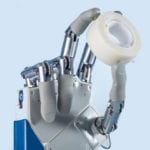 Movies and TV
Movies and TV  Movies and TV
Movies and TV  Health
Health 10 Miraculous Advances Toward Curing Incurable Diseases
 Miscellaneous
Miscellaneous 10 Undeniable Signs That People’s Views of Mushrooms Are Changing
 Animals
Animals 10 Strange Attempts to Smuggle Animals
 Travel
Travel 10 Natural Rock Formations That Will Make You Do a Double Take
 Movies and TV
Movies and TV 10 Actors Hidden in Your Favorite Movies
 Our World
Our World 10 Science Facts That Will Change How You Look at the World
 Pop Culture
Pop Culture 10 Incredible Female Comic Book Artists
 Crime
Crime 10 Terrifying Serial Killers from Centuries Ago
 Technology
Technology 10 Hilariously Over-Engineered Solutions to Simple Problems
 Movies and TV
Movies and TV 10 Movie Adaptions That Brought Popular Songs to Life
 Health
Health 10 Miraculous Advances Toward Curing Incurable Diseases
 Miscellaneous
Miscellaneous 10 Undeniable Signs That People’s Views of Mushrooms Are Changing
Who's Behind Listverse?

Jamie Frater
Head Editor
Jamie founded Listverse due to an insatiable desire to share fascinating, obscure, and bizarre facts. He has been a guest speaker on numerous national radio and television stations and is a five time published author.
More About Us Animals
Animals 10 Strange Attempts to Smuggle Animals
 Travel
Travel 10 Natural Rock Formations That Will Make You Do a Double Take
 Movies and TV
Movies and TV 10 Actors Hidden in Your Favorite Movies
 Our World
Our World 10 Science Facts That Will Change How You Look at the World
 Pop Culture
Pop Culture 10 Incredible Female Comic Book Artists
 Crime
Crime 10 Terrifying Serial Killers from Centuries Ago
 Technology
Technology 10 Hilariously Over-Engineered Solutions to Simple Problems
10 Recent Scientific Advances That Signal The Future
Scientific discoveries are being made every day that are changing the world we live in. This list contains some crazy scientific innovations—and they’ve all been made in June 2013. From physics to medicine to biology, the following stories are sure to blow your mind. Technological and medical advancements that most people believed would never happen in their lifetime, let alone at this very moment, are real and continuing to develop. These discoveries bring with them a myriad of new technology and techniques that will only grow and improve with time to make the world a better place to live in.
10 Telekinesis
Being able to control the motion of objects may seem like the plot of a science fiction novel, but thanks to researchers from the Minnesota College of Science and Engineering, it’s now a reality. Using a noninvasive technique known as electroencephalography that harnesses brainwaves, five students were able to control the motion of a helicopter.
Facing in the opposite direction of the copter, students were able to move the vehicle in various directions by imagining themselves moving their left hand, right hand, and both hands. After some time and training, participants were soon able to get the helicopter to perform several maneuvers including passing through rings with an image of the flight being showed to them on a screen. Researchers are hoping to expand this new noninvasive brain wave technology to eventually restore motion, hearing, and sight in patients suffering from paralysis or neurodegeneration.
9 Cardiac MRI
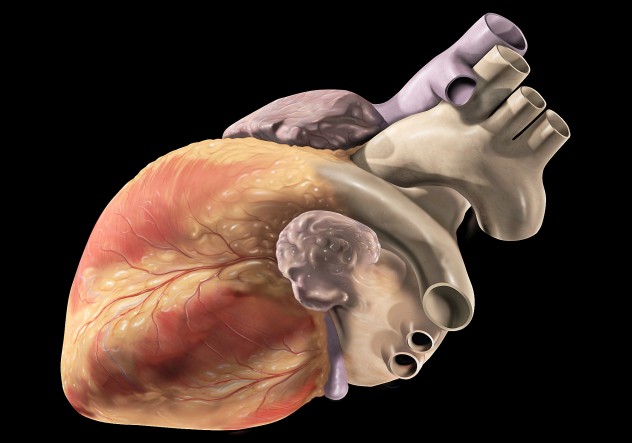
Anthracycline is an effective form of chemotherapy, but it has been shown to severely damage the hearts of many children who undergo treatment. Up to now, most children suffering from this heart damage find their heart walls thinning and by the time they are diagnosed it’s usually much too late to do anything about it. Ultrasounds would frequently miss the heart defect until years following the treatment, once the irreversible damage had already taken its toll.
But a new technique was unveiled on June 10th. Through extensive testing, the T1 MRI has been shown to be more accurate, more efficient, and safer than existing techniques used to detect heart disease in children. Doctors have been able to see childhood heart defects earlier and more effectively than with the ultrasounds (which erroneously show the hearts to be perfectly fine). This is a great medical advancement for detection of early childhood heart diseases.
8 Efficient Electrolysis (Saltwater Splitting)

In the race to find efficient and plentiful alternative fuels, researchers have always hit a roadblock when trying to come up with an efficient method of splitting seawater to produce hydrogen fuel. On June 10th, a team at the Australian Research Council Centre of Excellence for Electromaterials Science unveiled a catalyst that is able to split ocean water with very little energy needed.
The catalyst has been fashioned into a flexible plastic film that soaks up and uses the energy obtained from light to oxidize the seawater. Unlike current methods that require a large amount of energy to oxidize the water, this method would produce enough energy to power the average home and car for a full day using only 5 liters (1.3 gal) of seawater. The film contains synthetic chlorophyll molecules to harness the energy of the sun in the same way the leaves of many plants do. Nor are there any chemical downfalls to using this method, unlike the current water-splitting method that emits clouds of poisonous chlorine gas.
This efficient and effective method could greatly reduce the cost of hydrogen fuel, allowing it to be a competitive alternative fuel to gasoline in the future.
7 Tiny Battery

With the recent invention of 3-D printers, the sky is the limit for the types of intricate and complex objects it can create. On June 18th, it was announced that a team of researchers at Harvard and the University of Illinois were able to synthesize a lithium-ion battery smaller than a grain of sand and less than the width of a human hair.
Researchers were able to achieve this astounding accomplishment through the delicate layering of a network of interlaced electrodes. After a 3-D design is complete on the computer, the printer uses specially made liquid inks containing electrodes designed to immediately harden once they hit the air. The device can serve a wide range of uses due to its size.
Prior to this battery, the existence of incredibly small battery-powered objects was few and far between. This is because devices designed to be incredibly small required batteries that were just as big as they were to give subsequent energy or they were given incredibly small batteries lacking any substantial power. The 3-D printer uses the inks and a detailed design from a computer program to be able to create the microbatteries.
6 Bioengineered Body Parts
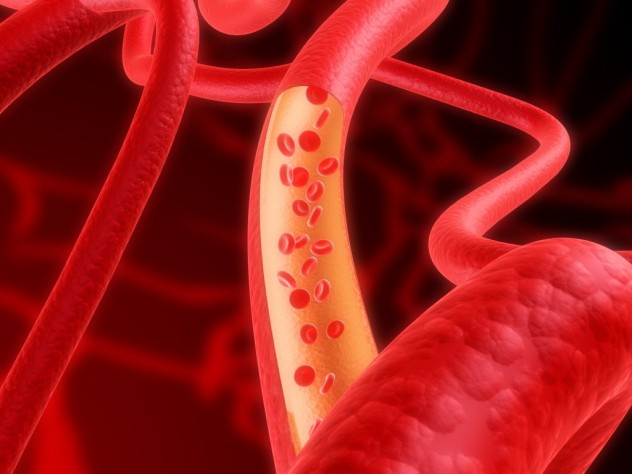
On June 6th, a group of doctors at Duke University successfully implanted the first bioengineered blood vessel into a live patient. Though bioengineering has been advancing rapidly, this procedure was the first successful implant of any synthetically bioengineered body part.
Implanted into a patient suffering from the end stages of kidney disease, the vein had been synthesized from donated human cells that were then developed on a scaffold. In order to prevent any antibodies in the patient from attacking the foreign vessel, the qualities that could trigger the attack were removed. The vein has proved more successful in tests than synthetic or animal-based implants because they are not prone to clotting and don’t pose risk of infection during the surgery.
Incredibly, the veins are made of the same flexible materials that they’re connected to and even take on the properties of their cellular environment and other veins. With the success of this procedure, this emerging field has huge implications for further uses in the medical world. Soon, doctors hope to be bioengineering veins for heart disease and maybe even go on to bioengineer whole organs or body parts.
5 The Four-Quark Particle
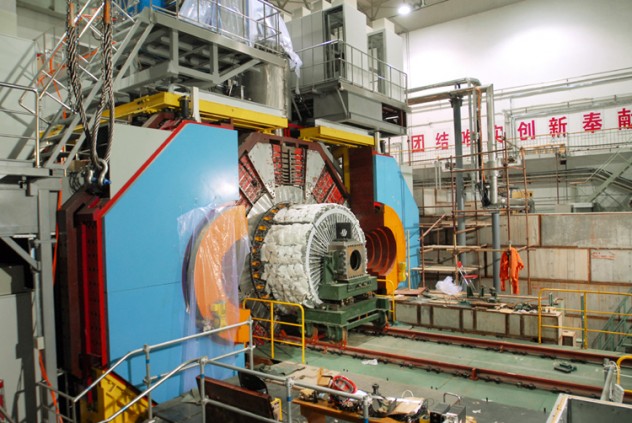
The search for the explanation of the birth of our universe is heating up after the June 18th announcement of the confirmation of a particle that has four quarks. While this may not seem that important, to physicists, the find has given rise to new explanations and theories of how matter was first created. Prior to this observation, the explanation for the creation of matter was limited since particles with only two or three quarks had ever been found.
Scientists have called this new particle Zc(3900), and they hypothesize that it was made in the first insanely hot seconds after the Big Bang. Following some years of complicated math equations from the BaBar collaboration at the SLAC National Accelerator Laboratory (affiliated with Stanford University), scientists working at the Beijing Electron-Positron Collider (BEPCll) noticed this particle on a number of occasions. Because scientists are nothing if not generous, the results were shared with the folks at CERN and the High Energy Accelerator Research Organization in Tsukuba, Japan. It was the Japanese scientists who were recently able to observe and isolate 159 of the particles. As with most scientific breakthroughs, the particle was lacking substantiation until scientists at the Belle detector in Beijing confirmed the isolation of 307 more particles.
Scientists claim that it took over 10 trillion trillion subatomic collisions in their detector, which is twice as big as the famous Large Hadron Collider in Switzerland. Some physicists have voiced criticism of the observation, claiming the particle is nothing more than two mesons (two quarked particles) bonded together. Regardless, the knowledge of the particle’s existence is huge for the world of physics and gives rise to a vast amount of ways the first pieces of matter could have formed.
4 Alternative Fuel Microbes

Imagine a world where high-efficiency, low-cost alternative fuels were as easy to obtain as the oxygen in the air around us. Well, thanks to the collaboration of the US Department of Energy and a team of researchers at Duke University, we might have a microorganism that can make this dream a reality. Recent years have seen great strides in the area of alternative fuels (like ethanol from corn and sugar cane). Unfortunately, these methods have proven inefficient and given rise to a lot of criticism like cutting into the food and land supply. Recently, scientists have been able to come up with electrofuels that are designed to harness solar energy without cutting into the food, water, or land supplies as most of the existing alternative fuels do.
In addition to its low energy need, tiny microbes can efficiently and effectively synthesize these electrofuels in a lab. These electrofuel microbes have been isolated and found living in non-photosynthetic bacteria. Using the electrons in the soil as food, the microbes eat up the energy to produce butanol when exposed to electricity and carbon dioxide. Using this knowledge, scientists extract the genes to complete this photosynthesis substitute and inject them into lab-grown bacteria allowing them to produce butanol in large amounts. Butanol is now being seen as the better alternative to both ethanol and gasoline for a variety of reasons. As a much larger molecule, butanol has a larger energy-carrying capacity than ethanol and doesn’t absorb water, so it can be placed directly in the gas tanks of any car and transported through the existing gasoline pipelines. These butanol microbes are very promising for the future of alternative fuels.
3 Medical Benefits Of Silver
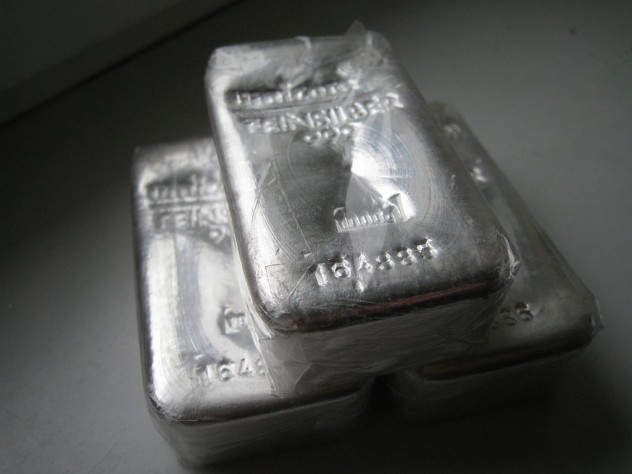
A study was published on June 19th by a team of researchers at Boston University regarding the benefits of using silver in antibiotics. While it has long been known that silver contains strong antimicrobial properties, scientists have only recently discovered that it’s able to turn normal antibiotics into antibiotics on steroids.
It is now known that silver uses many chemical processes to stop bacteria from forming bonds, slow their metabolic rates, and disrupt homeostasis. These processes cause the bacteria to become weak and more susceptible to the power of antibiotics. Through multiple studies, the mixture of silver and antibiotics has been up to 1,000 times more effective in killing bacteria than antibiotics alone. Some critics warn that using silver may have potentially toxic side effects on its users, but scientists disagree, saying small non-toxic amounts increase the effectiveness of the antibiotic. This is a very exciting discovery for the medical world, with the possible uses and applications for this precious metal continuing to grow.
2 Sight For The Blind

The first bionic eye prototype was introduced by a team of Australian designers in early June. The bionic eye works by having a chip implanted into the user’s skull and then connected to a digital camera in the glasses. While the glasses currently only allow the user to see outlines, the prototype has a lot of promise to be improved upon in the future. Once the camera captures an image, the signal is changed and sent wirelessly to the microchip. From there, the signal activates spots on the microchip implanted into the visual cortex of the brain. The team of researchers is hoping to further the capabilities of the glasses while keeping them lightweight, adjustable, and comfortable for the wearer. It should be usable by 85 percent of people who are legally blind.
1 Immunity To Cancer
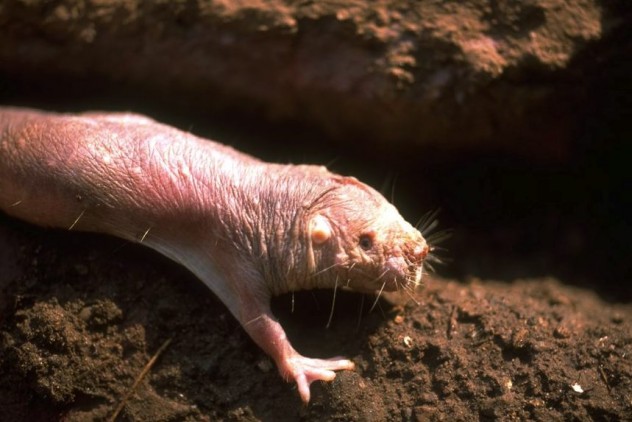
The University of Rochester published a study on June 19th suggesting the mechanism that allows naked mole rats to be immune to cancer. These creepy subterranean rodents may get a lot of heat for their looks, but they seem to be having the last laugh when it comes to their immunity to cancer.
A gooey sugar known as hyaluronan (HA) has been found in the spaces between naked mole rats’ cells, which seem to stop them from growing close together and forming tumors. The substance, acting like a parent chaperone at a high school dance, causes early contact inhibition, which is a process that stops cells from multiplying once they reach a certain density. A double mutation in the two enzymes that promote HA’s growth and reduce its breakdown is thought to be the reason for the elevated amount of the substance. Scientists tested the theory by infecting skin cells containing both high and low amounts of HA with cancer.
It was found that in the cell with low levels of HA, the cancer multiplied rapidly, but in cells with high HA, tumors failed to form. Scientists are hoping to modify laboratory rats to produce high amounts of HA in an attempt to make mice immune to cancer.
Shelby is an undergraduate at Arizona State University studying psychology and medicinal biochemistry. She is constantly fascinated by the mysteries of the world around her. She hopes to go on to medical school once she graduates to be able to search for and solve these mysteries.
